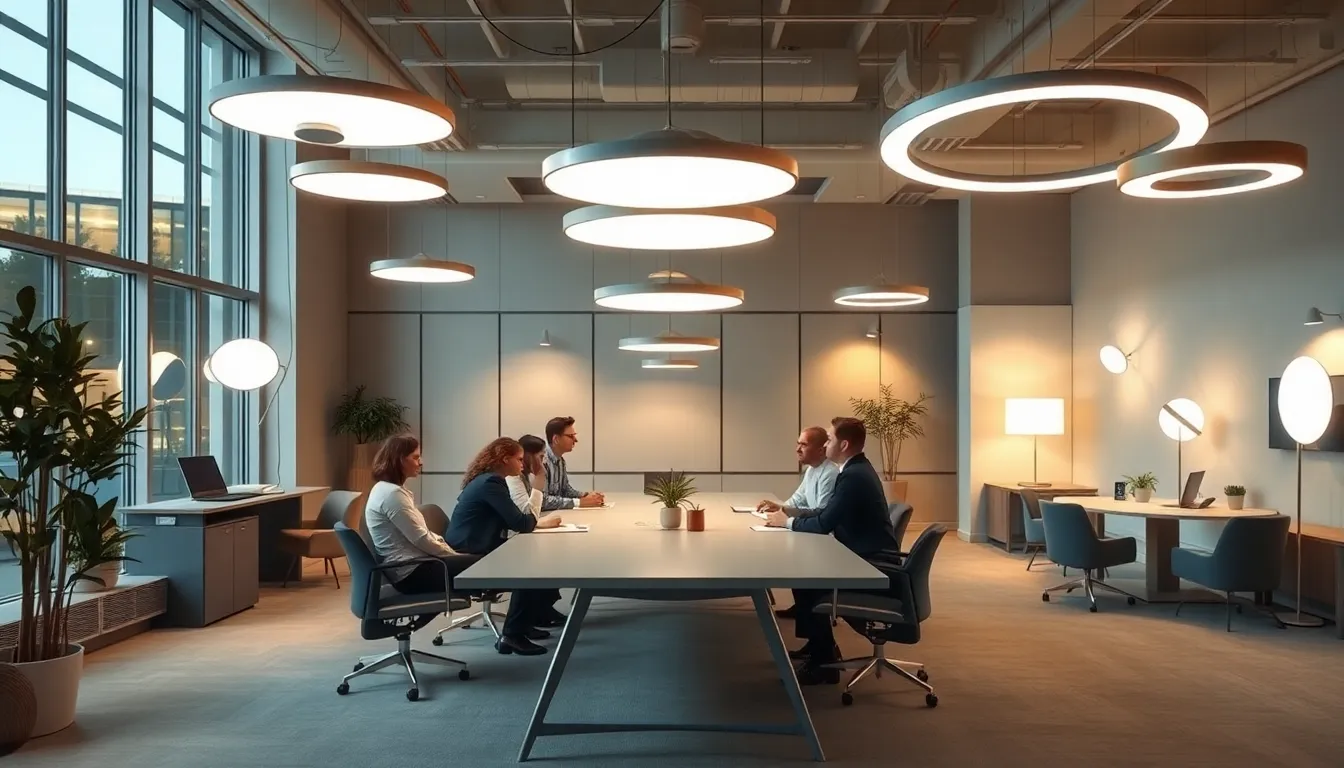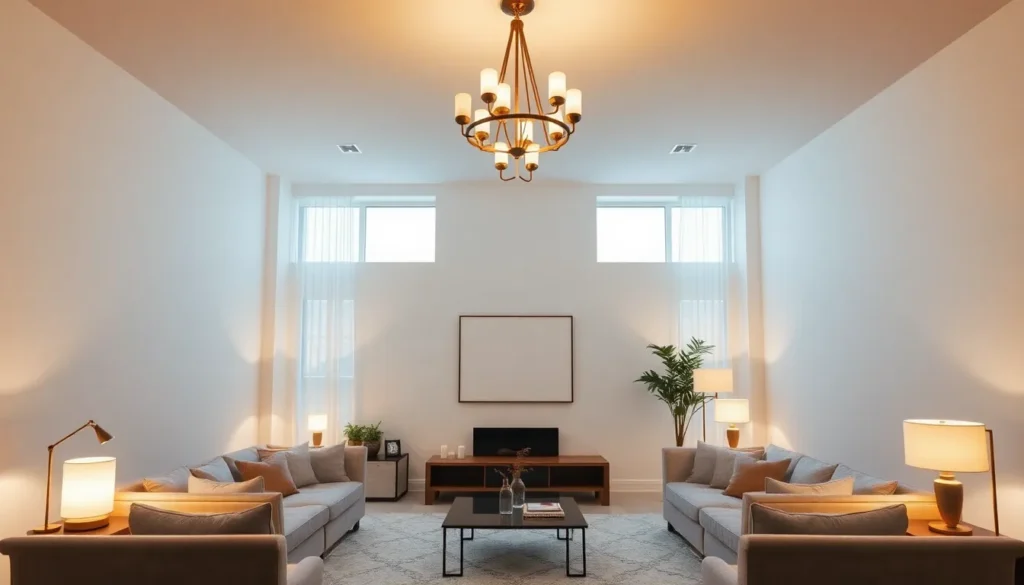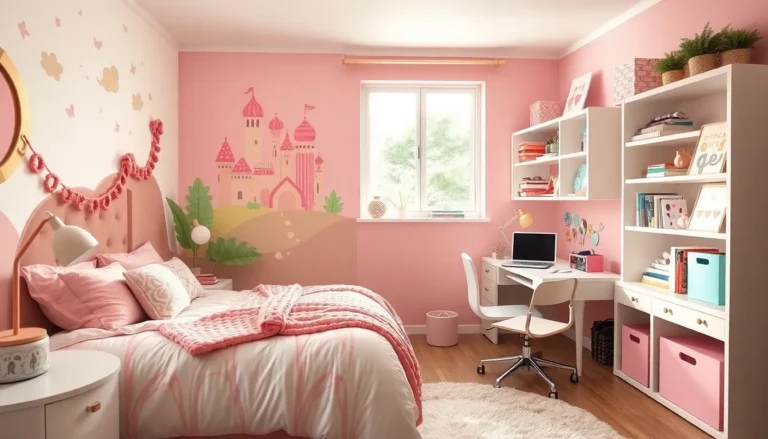Imagine walking into a room where the light feels just right, not too harsh, not too dim. It’s like being embraced by a warm hug of radiance. The secret behind such cozy spaces often lies in visual comfort lighting fixtures. These fixtures do something magical: they blend aesthetic appeal with functionality to create environments that aren’t just well-lit but also comfortable for the eyes. In this text, we will explore how visual comfort plays a pivotal role in our daily lives, why it matters, and what types of fixtures can help you achieve it. Let’s shed some light on bright ideas for your living spaces.
Table of Contents
ToggleUnderstanding Visual Comfort in Lighting

Visual comfort refers to the pleasantness of a light environment. It’s about how light interacts with our surroundings and our ability to see without straining our eyes. Imagine squinting under glaring lights, not fun, right? Proper visual comfort minimizes glare, flicker, and harsh contrasts, allowing one to see clearly and without discomfort. Fixtures designed with this in mind take into account factors such as color temperature and brightness levels, ensuring they cater to our visual needs, making every glance feel just right. When crafted effectively, these lighting environments support productivity, relaxation, and overall well-being.
The Importance of Visual Comfort
Visual comfort isn’t just a luxury: it’s essential for a productive environment. Poor lighting can lead to eye strain, headaches, and decreased focus. Anyone who has worked under fluorescent lights for too long can attest to this discomfort. Good visual comfort promotes better health by reducing the risk of eye-related issues. Also, it enhances mood and productivity. Studies have shown that well-lit spaces can have a positive impact on emotions and performance. So whether at home or in an office, considering how lighting affects people is crucial. In essence, investing in visual comfort isn’t just about aesthetics: it’s a matter of health and efficiency.
Types of Visual Comfort Lighting Fixtures
Different types of lighting fixtures serve various purposes in enhancing visual comfort. Here are three main categories that play critical roles:
1. Ambient Lighting Fixtures
Ambient lighting is the foundation of any well-lit space. It provides a soft, general illumination throughout a room. Fixtures like ceiling-mounted lights, chandeliers, and recessed lighting are great options. They fill the space with light without focusing too much on specific areas, creating a warm and inviting atmosphere. Ambient lighting should be bright enough to see but soft enough to avoid glare, achieving a delicate balance for visual comfort.
2. Task Lighting Fixtures
Task lighting is all about focusing on specific activities, think reading a book or chopping vegetables. These fixtures should offer brighter, directed light to assist with tasks while maintaining visual comfort. Desk lamps, under-cabinet lighting, and floor lamps often fall into this category. They help illuminate workspaces without causing shadows or discomfort, ensuring clarity while performing daily activities.
3. Accent Lighting Fixtures
Accent lighting adds drama and highlights specific features in a space, such as artwork or architectural details. Though primarily for aesthetics, these fixtures can contribute to visual comfort by enhancing the overall ambiance. Wall sconces and track lighting are great examples. By skillfully placing these fixtures, one can create a layered lighting effect that not only pleases the eye but also complements the ambient and task lighting.
Choosing the Right Visual Comfort Lighting Fixture
Selecting the perfect visual comfort lighting fixture involves considering several factors:
Factors to Consider
- Purpose of the Space: Understand what the primary function of the area will be. Will it serve as an office, a cozy living area, or a bustling kitchen? Let the purpose guide fixture choice.
- Brightness and Color Temperature: Look at how bright the fixtures need to be. Warm white lights tend to create a relaxing atmosphere, while cooler whites can aid concentration and activity.
- Dimming Options: Consider fixtures with dimming capabilities. These allow for adjustable brightness, adapting the light ambiance to different times of the day or activities.
- Energy Efficiency: Opt for LED lighting when possible. LEDs not only save energy but typically provide excellent light quality while reducing glare.
- Design and Aesthetics: Ensure the chosen fixtures blend well with the overall decor. A well-placed fixture can serve as a design statement as much as a source of light.
Designing Spaces with Visual Comfort in Mind
When designing a space, it’s essential to think about the interplay of lighting with other elements of the environment. Here are some best practices:
Best Practices for Installing Lighting Fixtures
- Layer Your Lighting: Combine ambient, task, and accent lighting. This layering creates depth, ensuring every corner of the room feels inviting.
- Use Multiple Sources: Instead of relying on a single fixture, use several light sources at different levels to reduce harsh shadows and create a more visually comfortable space.
- Experiment with Placement: Before finalizing your installations, trial placements. If using multiple fixtures, ensure they work well together and don’t cause overlapping harsh lights.
- Consider Dimming Controls: Opt for dimmers in communal areas like living rooms. Dimming options provide flexibility for different moods, ensuring the atmosphere can shift from vibrant to calming seamlessly.



